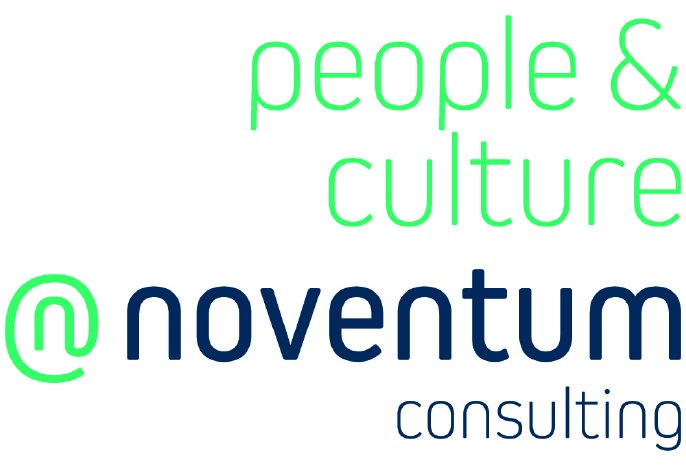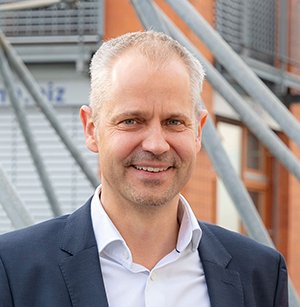The story in headlines:
- HR at Schmitz Cargobull is reviewing its process structure and methodically expanding it to include the OKR approach.
- After a theoretical part, the sub-projects of the process managers (overall HR process) are discussed in the practical part.
- Question: can we integrate the OKR idea into the process flow and thus modernise it?
- Question: do we need a different communication and reporting system in order to be able to live our processes emphatically?
- Question: can we make our project management smarter (after the addition of OKRs) by introducing agile communication structures?
OKR is a proven management approach that is used by numerous companies worldwide to work more agilely and successfully. This model organises work around clearly defined goals ("objectives") and measurable results ("key results"). It combines strategic planning with operational implementation and is known for its simplicity and clear structure.
Through OKR, employees and managers are in direct dialogue, which breaks down traditional reporting hierarchies. This promotes transparent communication and improves the flow of information within an organisation. Employees can always see how they are contributing to the overall success, which strengthens their identification with the company's goals and makes their daily work more motivating. This leads to greater satisfaction among employees. Managers also benefit by achieving their ambitious goals more efficiently through increased agility and focus.
It all starts with a precise objective
Michael Hengesbach has been Head of Group HR at Schmitz Cargobull since August 2018. Developing, integrating and retaining qualified and committed employees at Schmitz Cargobull is a central part of the corporate strategy, which he is responsible for implementing. Demographics and a changing work culture have also left their mark on the manufacturing industry, which is why the HR manager sees one of his most important tasks as opening up his company to new working methods.
It was his initiative to realign the complex tasks of the HR department with the OKR method and so, together with noventum consultant Marc Schwellenbach, he organised a series of workshops on the topic of current work organisation in his department.
OKRs strengthen the focus without completely turning the organisation upside down
The starting point was the existing HR process organisation and 15 sub-process managers were invited to discuss the objectives and measures of HR work at Schmitz Cargobull. "Our idea was that a clear formulation of objectives and measures (key results) would increase the efficiency of our HR processes and make our team more agile," explains Michael Hengesbach.
- The end-to-end organisation of the HR process at Schmitz Cargobull was the focus of the analysis of objectives and measures.
- The strategic objectives of the HR department in the vision and mission provided the framework.
- The objective was to summarise the strategy, objectives and measures.
- OKR sets were defined within this framework.
Specific OKRs were developed during the practical workshops based on the end-to-end HR processes that map the entire life cycle of an employee. These included more general and wide-ranging OKRs that have an impact on the overall strategic direction of the process organisation, as well as specifically focused OKRs. These included, for example, the optimised design of the offboarding process for retiring employees and the optimisation of onboarding with regard to welcome packages for new employees.
For the HR team at Schmitz Cargobull, this revealed the range of possible OKRs with their individual depth of impact and potential for practical use.
"For OKRs to really come to life, I have to bring the whole thing into an agile structure. I experience this time and again when teams start to re-operationalise their goals." Marc Schwellenbach noventum consulting
OKRs and agile methodology belong together
While the original focus of the workshops was on the discussion of OKRs, it quickly became clear that the organisational and communication methods also needed to be further developed in order to optimally exploit the potential of the OKR methodology.
The key question of the corresponding workshop was therefore: how can I integrate OKRs into my team in a very compact yet strategically relevant way and with a high degree of alignment with what I want to achieve strategically? The side question "What does agility have to do with this?" emphatically led to the realisation that it is not about living agility in its purest form, but about being aware of the effects that it has when I organise my collaboration in a certain way.
Marc Schwellenbach summarises his experiences: "Before introducing agility, Schmitz Cargobull deliberately focused on the benefits: do we need agility to achieve our goals (OKRs)? If participation and transparency (agile) are to be effective, if the understanding of the goal is to be clear and nothing gets lost ("staying on the ball"), then we have to adapt the working methodology. OKRs without a corresponding regular meeting structure don't work well."
Schmitz Cargobull is the leading manufacturer of semi-trailers for temperature-controlled freight, general cargo and bulk goods in Europe and a pioneer in digital solutions for trailer services and improved connectivity. The company also manufactures transport refrigeration units for refrigerated semi-trailers for temperature-controlled freight transport. Schmitz Cargobull supports its customers in optimising their total cost of ownership (TCO) and digital transformation with a comprehensive range of services from financing, spare parts supply, service contracts and telematics solutions to used vehicle trading. Schmitz Cargobull was founded in 1892 in Münsterland (Germany). The family-run company produces around 60,000 vehicles per year with over 6,000 employees and generated a turnover of around 2.6 billion euros in the 2022/23 financial year. The international production network currently comprises ten plants in Germany, Lithuania, Spain, England, Turkey, Slovakia and Australia.




